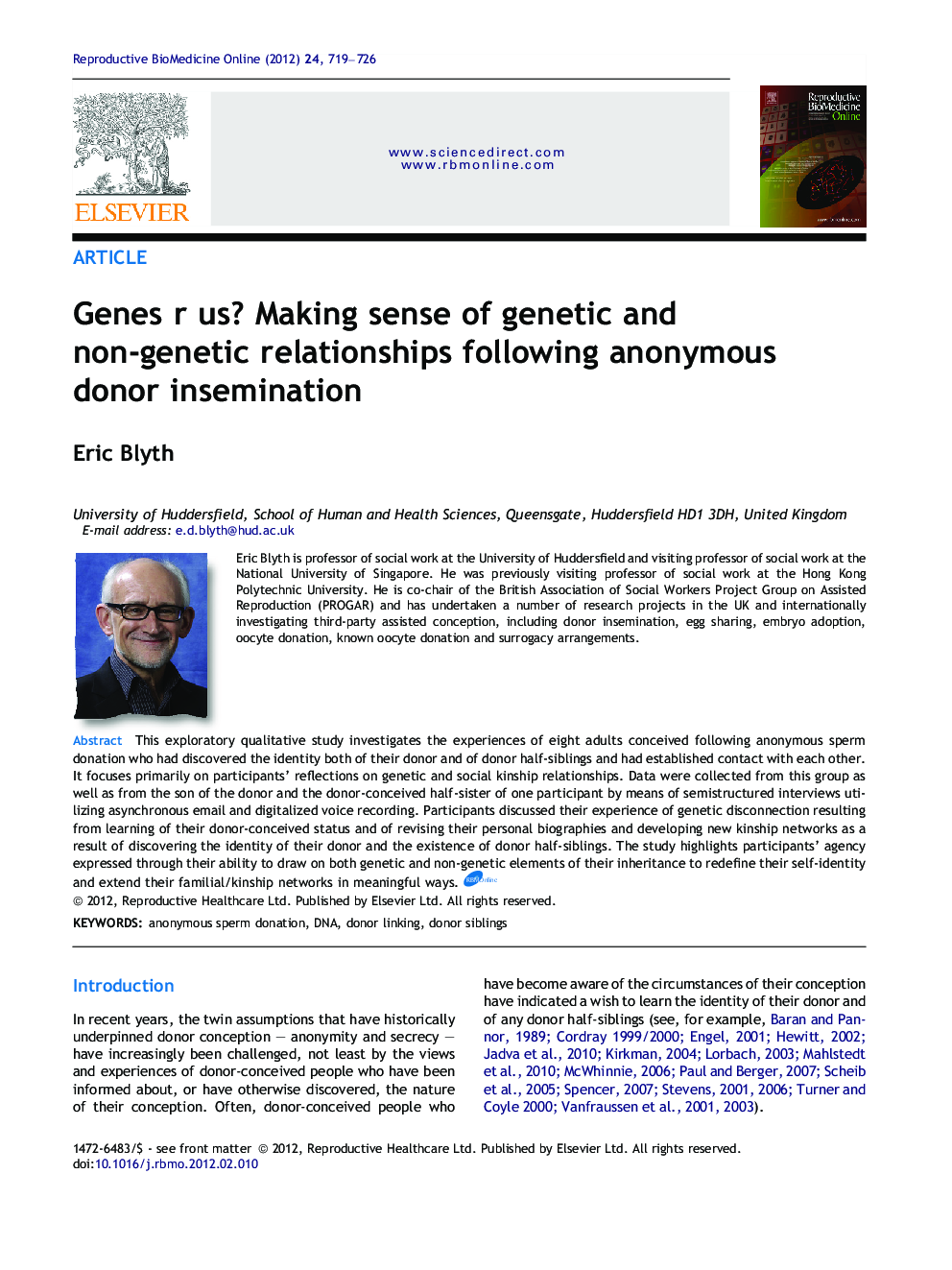| Article ID | Journal | Published Year | Pages | File Type |
|---|---|---|---|---|
| 3970995 | Reproductive BioMedicine Online | 2012 | 8 Pages |
This exploratory qualitative study investigates the experiences of eight adults conceived following anonymous sperm donation who had discovered the identity both of their donor and of donor half-siblings and had established contact with each other. It focuses primarily on participants’ reflections on genetic and social kinship relationships. Data were collected from this group as well as from the son of the donor and the donor-conceived half-sister of one participant by means of semistructured interviews utilizing asynchronous email and digitalized voice recording. Participants discussed their experience of genetic disconnection resulting from learning of their donor-conceived status and of revising their personal biographies and developing new kinship networks as a result of discovering the identity of their donor and the existence of donor half-siblings. The study highlights participants’ agency expressed through their ability to draw on both genetic and non-genetic elements of their inheritance to redefine their self-identity and extend their familial/kinship networks in meaningful ways.This paper reports findings from a study investigating the experiences of eight adults who learned of their conception following anonymous donor insemination provided by the same fertility clinic, the identity of their shared donor and their relatedness to each other and who had subsequently established communications with each other. The donor-conceived sister of one participant and the son of the donor also participated. Data were collected by means of email communications using a semi-structured interview schedule. The specific focus of this paper examines participants’ experiences of genetic disconnection resulting from learning of their donor-conceived status and of revising their personal biographies and developing new kinship networks as a result of discovering the identity of their donor and the existence of donor half-siblings. It concludes that participants were able to draw on both genetic and non-genetic elements of their ‘roots’ in order to redefine their self-identity and extend their familial/kinship networks.
